Article by Reiki Master Supriya Nair
The Trinity in Reiki
The concept of trinity is an underlying principle of many metaphysical teachings. The Japanese energetic system has three such centres in the body which they call the Three Diamonds – the Earth centre located just below the navel or hara, the Heavenly centre located in the head, and the Oneness centre located in the middle of the chest. According to esoteric Buddhist practices, the head centre (white drop) and the hara centre (red drop) have to each make connection with the heart centre (indestructible drop). These three drops then melt together to result in Emptiness (Oneness/ Unity/ Zeroness). One of the sutra in Japanese Buddhism, including Tendai Buddhism, states that Dharmadhatu (Buddhahood) flowed out of the three places (upper, middle and lower parts of Buddha’s body).
Qi Gong practices in China also utilize dantian, the three main energy centres – xia dantian (navel), zhong dantian (chest) and shang dantian (head) representing Earth, Humankind and Heaven. To become One with the Dao (divine energy), one needs to balance the energies at these three centres.
Similarly, according to yogic traditions, there are three granthis or knots – Rudra granthi (head), Vishnu granthi (heart) and Brahma granthi (lower abdomen) each representing an obstacle for the raising kundalini. The transcendence of these three knots enables the yogi to make a leap in consciousness.
Native Incan practices also give a lot of significance to the trinity of – the world above (future), the middle world (present) and the underworld (past). Conjoining these three aspects can help humans access the three dimensions.
Likewise, there are many other universal trinities that exist, Sat (being)-Chit (consciousness)-Ananda (bliss), Ten-Chi-Jin, Birth-Life-Death, Past-Present-Future, Man-Child-Woman, Father-Son-Holy Spirit, God-Goddess-Creative Force, Isis-Osiris-Horus, including all the pyramid energies and the Threefold Flame of blue (power)-gold (wisdom)-pink (love).
Reiki is also primarily based on the concept of trinity. In Reiki, part of the kanji for Rei represents the ‘Universal Consciousness or Heaven.’ Another part of Rei symbolizes the ‘Shaman’ that acts as an intermediary between Heaven above and the Earth below. The kanji for Ki, on the other hand, portrays the ‘Life Force’ (from rice) which provides mankind with sustenance and energy on Earth. This forms the trinity of Heaven, Earth and Human. The Heaven energy combines with the Earth energy in the Heart of the Shaman (Reiki practitioner), thus empowering them to become fully balanced as a unity and helps them move forward on the path of self-realization. You can read more about the hidden meaning of Reiki in the previous article “Unveiling Reiki: The Science of Reiki (Part 2)”.
| Ame (part of Rei) = Heaven | = Universal | = Yang (positive polarity) |
| Kuchi and Miko (part of Rei) | = Human (non-dual) | = Yang + Yin (neutral) |
| Ki = Earth | = Life Force | = Yin (negative polarity) |
In the pre-World War II version of the kanji, Rei contains three containers or mouths called Kuchi. You can read more on the kanji in the article “Unveiling Reiki: Reiki Kanji and Its Evolution (Part 1)”. These mouths too signify the characteristics of a trinity. Representing the three centres, dantian, or granthis in the body, the mouths illustrate the three levels that the Reiki practitioner needs to balance and realign to attain the state of Oneness with the Divine. When he/she is successful in balancing these internal conflicts, the shaman attains liberation from all physical and mental bondages. However, this freedom is not permanent but a choice that needs to be claimed every moment each day.
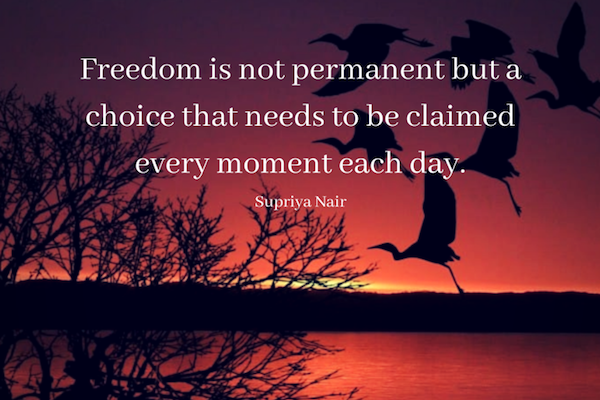
When we look at Reiki symbols too, the significance of the trinity becomes evident.
- Cho Ku Rei – the power symbol, represents the energy at the Physical/ Earth level. It symbolizes nourishment and sustenance at the cellular level.
- Sei He Ki symbol – depicts the energy at the Mental/Emotional or Human level. It personifies the hidden subconscious and psychological levels of the human being.
- Dai Ko Myo – the Master symbol embodies the energy at the level of the Heaven/ Divine. It reflects the archetypal or spiritual level. In fact, the master symbol is an all-inclusive kanji as it represents the trinity in itself – Dai (physical), Ko (emotional/mental) and Myo (spiritual). Hence it has the highest vibration of all the symbols and it is at this divine level that all the four Reiki symbols work. Apart from the trinity, there is a fourth level of the state of enlightenment, which is the void beyond all symbols or forms.
Since three is indivisible by any even number, it has no polarity. Thus Reiki has no polarity. It is for this same reason that we affirm the symbol or our intent thrice, so that it is integrated as a balanced trinity.
Non-duality and Reiki
“In our quest for the elixir of life, we drink the potion of duality from the intoxicating chalice of non-remembrance”.
This is the paradox of our life. It is a universal truth that our life constantly revolves around dualism – health and disease, life and death, pleasure and pain, masculine and feminine, love and unforgiveness. Dualism also extends to the natural elements of Earth and Heaven, fire and water, sun and moon, day and night, light and dark, etc. As we integrate the duality within and without us, we move closer to harmony and unity (Yoga).
Yoga in Sanskrit means to join, yoke, harness or attach and is associated with the ‘union’ of the Creation with the Creator – Human spirit with the Divine – individual soul (jiva) with the supreme soul (atman). According to Yogabija, a Hatha yoga work, “yoga is the union of apana and prana, one’s own rajas and sattva, the sun and moon, the individual soul and the supreme soul and in the same way the union of all dualities”. The Ida and Pingala nadis akin to Chinese meridians also represent the dual aspects. When prana (life force) finds its way into to the central Sushumna nadi is when the practitioner of yoga becomes a yogi by creating a non-dual experience. Hatha yoga, wherein ha means sun (fire) and tha means moon (water), is a system which brings about the union of opposites.
A similar concept exists in the Japanese martial art of Aikido, called Tenchi which means to stand firmly between Heaven and Earth. Humans, according to Aikido practitioners are a combination of these two elements and should learn to balance these dual elements. This act of harmonizing will enlighten the practitioner about their own true self, according to Morihei Ueshiba, the founder of Aikido.
The concept of ‘as above, so below’ also implies that there is a synchronicity between the macrocosm and microcosm. Mekaba or star tetrahedron is akin to a hexagram formed from the uniting of two triangles symbolizing the unity of dual forces of fire and water. In Hinduism, the hexagram shatakona unites the opposite forces of Shiva (fire) and Shakti (water) giving rise to Sanatakumara (the son of Brahma). One triangle descends from above, bringing spirit to matter, while the other triangle ascends from below, elevating matter into the spiritual world.
Sri Yantra used by Tantriks, Hunab Ku used by the Mayans, Caduceus used by the Egyptians and Greeks, Magen David or “Solomon’s Seal” used by King David and his successor King Solomon, Star of David used by Jewish Mystics, Yin Yang used by the Taoists, Tree of Life used by the Pagans are all similar symbols that indicates the unity of opposites. Alchemists hold the belief that the one who balances the dual energies of nature becomes the possessor of the Philosopher’s Stone.
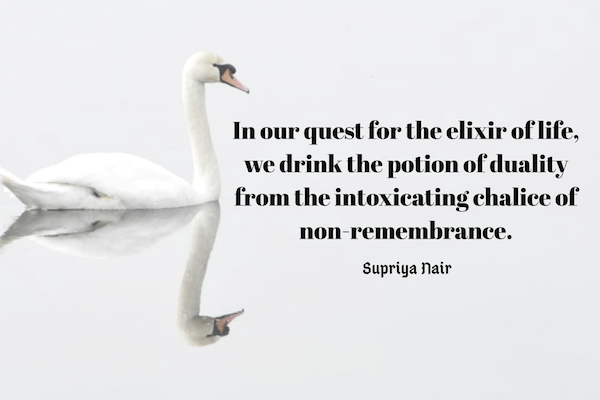
Reiki too strives towards non-duality. If we closely observe the part of Miko (shaman) in the Reiki kanji, we see two humans standing in prayer within the shaman. These two aspects within the shaman are the dual aspects of masculine-feminine, light-dark, sun-moon, fire-water, Ida-Pingala. Whatever term we call these dual aspects, the crux is to find a balance between them. Realigning and working with duality to bring them in harmony is the task of Miko (Reiki practitioner).
This is also reflected in Dai Ko Myo, the master symbol in Reiki which is representative of non-duality and enlightenment in its true sense. The bottom Myo part of the kanji contains the characters for sun (day light) and moon (night light), while the upper part represents the human. This human is the Reiki practitioner on the journey of realizing non-duality and his aim is to do this by bringing in equilibrium the dual aspects within them.
Therefore, the ultimate goal as a Reiki practitioner is rather self-explanatory. It is balancing our own spiritual and physical aspects. Integrating the polarities to attain the state of unity and harmony is the true spiritual essence of Reiki practice.
Previous articles in the series:
- Unveiling Reiki: Reiki Kanji and Its Evolution (Part 1)
- Unveiling Reiki: The Science of Reiki (Part 2)
Free eBook download: We’ve created an eBook with our best articles on this topic, and offer it for free to all our newsletter subscribers.
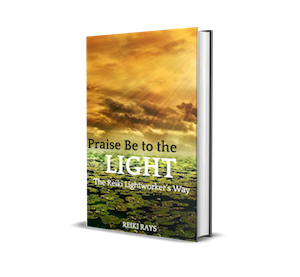
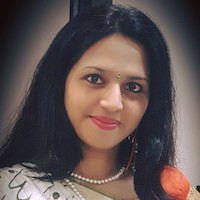
Supriya Nair
Dr. Supriya Nair, IMD, PhD has been a Reiki and Kriya Yoga practitioner since 2008. A conduit between the scientific and spiritual worlds, Dr. Supriya has a profound fascination for the healing arts. Apart from holding the title of Usui Reiki Master Teacher, Dr. Supriya is a certified Health Coach and proficient in various integrative medicine modalities. She is also the author of "Train Your Brain to Unchain Your Pain."
To get in touch with Dr. Supriya, you can reach out via email at [email protected] or connect with her on Facebook at facebook.com/supriyanair111 and on Instagram at instagram.com/proconscious.cafe.

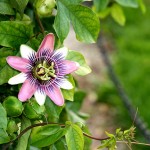


👍🙌
Thank you Rohini
Thank you for sharing these divine information… Loved this article
Thanks Abhay
Thank you. Very Appreciated Supriya.
Thank you Writeously.
You alwaysss try to come up with ocean of knowledge… Thank you for adding more knowledge in our brains 😍👐
Thanks for your kind words Margina.